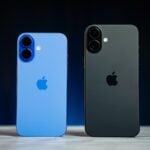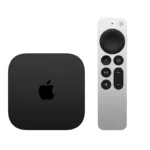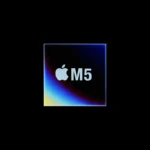Apple’s new hearing test feature for AirPods Pro 2 makes it easy to check your hearing health. The test takes just five minutes and can be done right on your iPhone. If you have mild to moderate hearing loss, the AirPods Pro 2 can work as a hearing aid.
The hearing test is part of iOS 18.1. To take it, you need AirPods Pro 2 with the latest firmware and an iPhone or iPad running iOS 18.1 or later. The test gives you results and next steps to take care of your hearing.
After the test, you can turn on the Hearing Aid feature in your AirPods Pro 2 settings. This lets you hear sounds more clearly throughout the day. The Health app stores your test results so you can track your hearing over time.
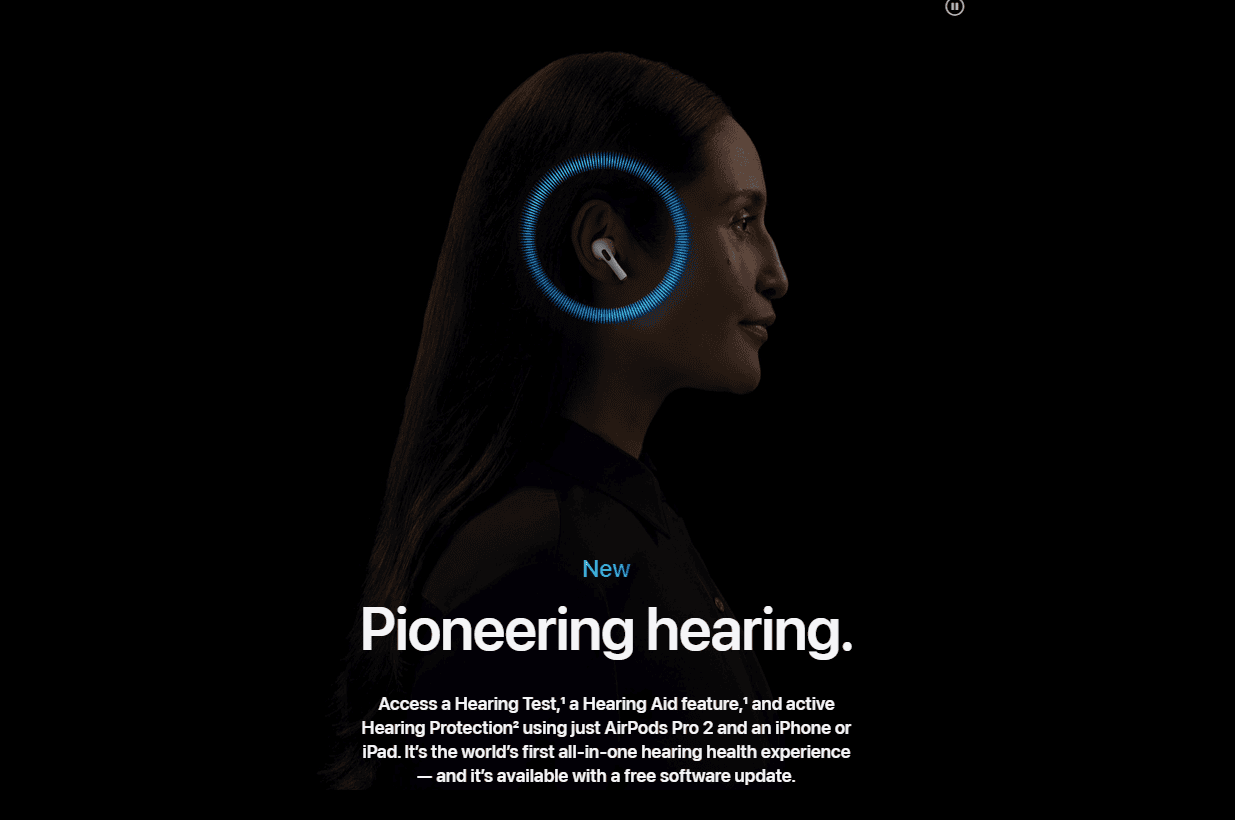
Apple Hearing Test
Essentially, Apple has turned the AirPods Pro (2nd generation) into a tool for taking a hearing test, right from the comfort of your home. It’s part of their broader push into health and accessibility features.
Here’s a breakdown of what the Apple Hearing Test involves:
How it Works:
- AirPods Pro (2nd generation) required: You’ll need these specific AirPods because of their design and noise-cancellation capabilities.
- Quiet environment: Find a quiet place to minimize distractions.
- In-ear seal: The AirPods’ snug fit helps create the necessary conditions for an accurate test.
- Pure-tone audiometry: The test uses this standard clinical approach, playing a series of tones at different frequencies.
- Interactive response: You’ll tap on your iPhone or iPad screen when you hear a tone.
- Results in the Health app: Your results are displayed in the Health app, showing your hearing sensitivity across different frequencies.
Why is this significant?
- Accessibility: It makes hearing tests more accessible and convenient, eliminating the need for specialized equipment or a visit to an audiologist (in many cases).
- Early detection: It could help people identify potential hearing issues earlier, leading to quicker intervention and better outcomes.
- Health integration: It ties into Apple’s broader health ecosystem, allowing you to track your hearing health over time.

Things to keep in mind:
- Not a replacement for professional diagnosis: While helpful, this test is not a substitute for a full hearing evaluation by an audiologist, especially if you have concerns about your hearing.
- Requires compatible devices: You need an iPhone or iPad with iOS 17 or iPadOS 17 or later, and AirPods Pro (2nd generation).
Where to find it:
- AirPods settings: Go to Settings > Your AirPods > Take a Hearing Test.
- Health app: You can also access the Hearing Test through the Health app.
Overall, the Apple Hearing Test is a fascinating example of how technology can be used to make healthcare more accessible and proactive. It empowers users to take control of their hearing health and potentially catch issues early on.
Does the Airpods 4 Support the Apple Hearing Test?
Unfortunately, no. As of right now, only the AirPods Pro (2nd generation) support the Apple Hearing Test feature.
Here’s why:
- Hardware Requirements: The Hearing Test relies on the specific design and noise-cancellation capabilities of the AirPods Pro (2nd generation) to create a controlled environment for accurate measurements.
- Software Integration: The feature is deeply integrated with the AirPods Pro (2nd generation) firmware and the iOS/iPadOS operating system.
While the AirPods (4th generation) have some impressive upgrades, they don’t have the necessary hardware or software to support the Hearing Test at this time.
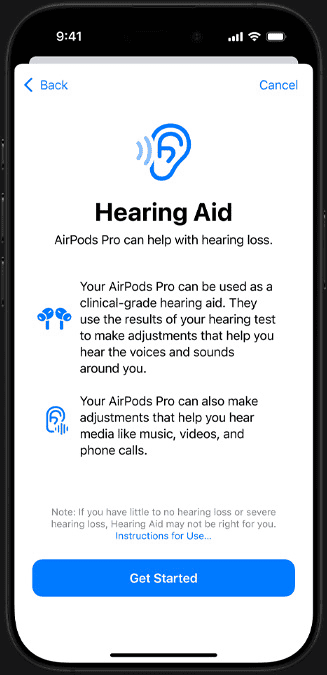
It’s possible that Apple could expand this feature to other AirPods models in the future, but there’s no official announcement or indication of that happening yet.
If you’re interested in using the Apple Hearing Test, you’ll need to have the AirPods Pro (2nd generation) and a compatible iPhone or iPad running iOS 17 or iPadOS 17 or later.
Key Takeaways
- Apple’s five-minute hearing test works with AirPods Pro 2 and iOS 18.1
- Test results show hearing health and suggest next steps
- AirPods Pro 2 can act as hearing aids for mild to moderate hearing loss
Understanding the Basics of Hearing Health
Hearing health is vital for overall well-being. It affects how we communicate and interact with the world around us. Good hearing helps us stay safe and enjoy life fully.
The Impact of Hearing Loss
Hearing loss can happen to anyone at any age. It makes it hard to hear sounds and understand speech. This can lead to feeling left out and lonely. Work and school may become more challenging.
Mild to moderate hearing loss is common. People with this type often struggle in noisy places. They might miss parts of conversations or need to ask others to repeat themselves.
The World Health Organization says over 1.5 billion people have some hearing loss. This number is expected to grow. Early detection and treatment can help slow down hearing loss.
The Role of Technology in Hearing Support
New tech is making it easier to check and protect hearing. Smartphones and earbuds now have hearing health features. These tools can test hearing and alert users to loud noises.
Apple’s AirPods Pro 2 offer a hearing aid feature. This helps people hear better in noisy settings. The earbuds can also give hearing tests and track environmental noise levels.
Hearing protection is key. Smart devices can warn when sounds are too loud. They can even lower the volume automatically. This helps prevent damage from long-term noise exposure.
These advances make it simpler for people to take care of their ears. Regular checks and proper protection can keep hearing healthy for longer.
Preparing for and Taking the Apple Hearing Test
The Apple hearing test is easy to do with AirPods Pro 2. You’ll need the right gear, follow some steps, and get results that show how well you hear.
Setting Up Your Device for the Test
To start, make sure you have AirPods Pro 2 and an iPhone with iOS 18.1 or newer. Check that your AirPods have the latest firmware. Open the Health app on your iPhone. Go to the Hearing section. Look for the option to take a hearing test. Make sure you’re in a quiet place. Background noise can mess up the results. Put your AirPods in your ears. Check that they fit well. A good seal helps the test work better.
The Testing Process
The test takes about 5 minutes. You’ll hear different tones. When you hear a sound, tap the screen. The app plays sounds at different volumes and pitches. It checks what you can and can’t hear. Stay still and focus during the test. Don’t talk or move around too much. The app guides you through each step. Follow the on-screen instructions carefully. If you’re not sure about a sound, it’s okay. Just do your best.
Understanding Your Test Results
After the test, you’ll see your results right away. The app shows an audiogram. This is a chart of your hearing levels. It measures in decibels hearing level (dBHL). The chart shows how well you hear different pitches. Lower numbers mean better hearing. The app tells you if your hearing is normal or if there’s hearing loss. It might suggest seeing a doctor if needed. You can save and track your results over time. This helps spot changes in your hearing. The test is clinically validated, which means it’s very accurate.
Advanced Hearing Features and Accessibility
Apple’s hearing health features offer users powerful tools to enhance their listening experience. These innovations blend cutting-edge technology with user-friendly design to support hearing health and accessibility.
Utilizing AirPods for Enhanced Listening
AirPods Pro 2 now include features that go beyond simple audio playback. The new Conversation Boost feature helps users hear conversations better in noisy settings. It uses the AirPods’ microphones to focus on the voice of the person in front of the user.
Media Assist is another new tool. It adjusts audio levels to make dialogue clearer in movies and TV shows. This feature is great for those who struggle to hear speech in media.
The H2 chip in AirPods Pro 2 powers these features. It uses a high dynamic range algorithm to process sound in real-time. This makes sure audio is clear and balanced for each user’s needs.
Accessibility Options and Adjustments
Apple has added many options to customize hearing features. Users can adjust settings in the Accessibility menu on their iPhone or iPad. These changes can make a big difference for those with hearing challenges.
One key feature is the ability to set up custom audio profiles. These profiles are based on the results of the Apple Hearing Test. They tailor sound output to match a user’s specific hearing needs.
Active Noise Cancellation can now be fine-tuned. Users can choose how much outside noise they want to block. This is helpful in different environments, from quiet offices to busy streets.
Future Developments and Over-the-Counter Solutions
Apple is working on more advances in hearing technology. They aim to bridge the gap between AirPods and traditional hearing aids. This could lead to new options for those with mild to moderate hearing loss.
The company is exploring over-the-counter (OTC) hearing aid solutions. These would be more affordable and easier to get than prescription hearing aids. Apple’s work in this area could help many people who need hearing support.
FDA approval will be key for these new devices. Apple is likely working to meet strict guidelines for OTC hearing aids. This could open up a new market for hearing assistance products.
FAQs
Does the iPhone have a Hearing Test?
Yes, iPhones with iOS 17 or later can conduct a hearing test using the built-in Health app. However, you’ll need AirPods Pro (2nd generation) to take the test. The AirPods’ design and noise-cancellation features help create a controlled environment for accurate measurements. You can access the Hearing Test through the Health app or by going to Settings > *Your AirPods* > Take a Hearing Test.
How do I turn my AirPods/iPhone into a hearing aid?
While AirPods Pro (2nd generation) can perform a hearing test, they don’t function as a full-fledged hearing aid replacement. However, they do offer features that can assist with hearing in certain situations:
- Conversation Boost: This feature helps you focus on the voices of people in front of you, making it easier to hear conversations in noisy environments.
- Live Listen: This allows you to use your iPhone as a microphone to amplify sounds around you, which can be helpful in situations where it’s difficult to hear.
- Personalized Spatial Audio: This feature creates a more immersive and personalized listening experience, which can be beneficial for people with mild hearing loss.
If you have significant hearing loss or require a dedicated hearing aid, it’s essential to consult with an audiologist for proper evaluation and recommendations.
Is there an app that turns earbuds into hearing aids?
Yes, there are several apps available that can amplify sounds and provide some hearing assistance through your earbuds. These apps typically use your phone’s microphone to pick up sounds and then process and amplify them through your earbuds. Some popular options include:
- Petralex Hearing Amplifier: This app offers customizable sound amplification and noise reduction features.
- Eargo Hearing: This app works with Eargo hearing aids but also has a “Sound Adjust” feature that can be used with regular earbuds.
- Mimi Hearing Test: This app offers a hearing test and personalized sound profiles that can be used with your earbuds.
While these apps can be helpful in certain situations, they are not a substitute for professional hearing aids. If you have concerns about your hearing, it’s crucial to consult with an audiologist.



